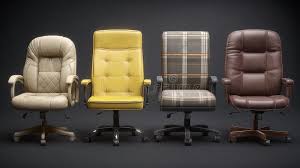The Economics of Office Coffee: How a Standard Drip Coffee Maker Can Boost Workplace Productivity and Reduce Costs
New York, NY – October 15, 2025 – In an era when companies are seeking innovative ways to enhance workplace productivity without inflating operational budgets, a simple yet effective solution is emerging from an unlikely source: the office coffee station. New insights into workplace economics reveal that investing in a standard drip coffee maker can significantly improve employee satisfaction, collaboration, and overall productivity—at a fraction of traditional incentive costs.
According to industry data and workplace studies, coffee plays a crucial psychological and social role in professional environments. Beyond its obvious benefits as an energy booster, coffee contributes to employee morale and teamwork. The humble standard drip coffee maker, often overlooked amid the rise of high-tech single-serve systems, has proven to be one of the most cost-efficient tools for maintaining daily workflow and office connectivity.
A report by Brimstone Coffee explains that a drip coffee maker’s simple design allows for high-volume, consistent brewing. The core components—a water reservoir, filter basket, heating element, showerhead, carafe, and hot plate—work seamlessly to produce large batches of coffee quickly, making it ideal for group settings. By offering employees reliable access to fresh coffee throughout the day, businesses can reduce downtime spent on coffee runs and increase focus during peak working hours.
A Cost-Effective Productivity Investment
From a financial perspective, the economics of in-house coffee are compelling. The average American worker spends between $1,200 and $1,500 annually on café coffee purchases. For an office with 25 employees, this translates to over $30,000 a year in external coffee expenditures. By comparison, maintaining a high-quality drip coffee setup—including fresh beans, filters, and maintenance—costs under $2,000 per year.
Moreover, time efficiency compounds these savings. When employees spend less time stepping out for coffee, productivity rises. Research indicates that a 10-minute daily reduction in coffee breaks across a mid-sized team can reclaim over 1,000 working hours per year—equating to more than $30,000 in recovered productivity based on average hourly rates.
Brewing Collaboration and Culture
Beyond numbers, the social value of a shared coffee environment cannot be overstated. Offices equipped with a standard drip coffee maker often report increased team cohesion and spontaneous collaboration. These brief, casual interactions—whether discussing ideas or decompressing between meetings—can lead to innovation and stronger interpersonal connections.
“Coffee is more than a beverage—it’s a social catalyst,” said a workplace culture consultant. “When employees gather around a shared coffee station instead of queuing at a café, they exchange ideas more freely. That sense of connection has tangible effects on productivity and creativity.”
Sustainability and Simplicity
Sustainability also adds to the appeal of traditional drip systems. Unlike pod-based machines, which generate plastic waste, drip coffee makers can use paper or reusable mesh filters. Thermal carafes eliminate the need for continuous heating, reducing energy consumption and environmental impact.
Conclusion
As businesses reassess spending and employee engagement strategies in a post-pandemic world, the case for the standard drip coffee maker is clear. With minimal investment, companies can brew measurable gains in performance, morale, and collaboration—demonstrating that sometimes, the most powerful workplace innovations start with a simple cup of coffee.





